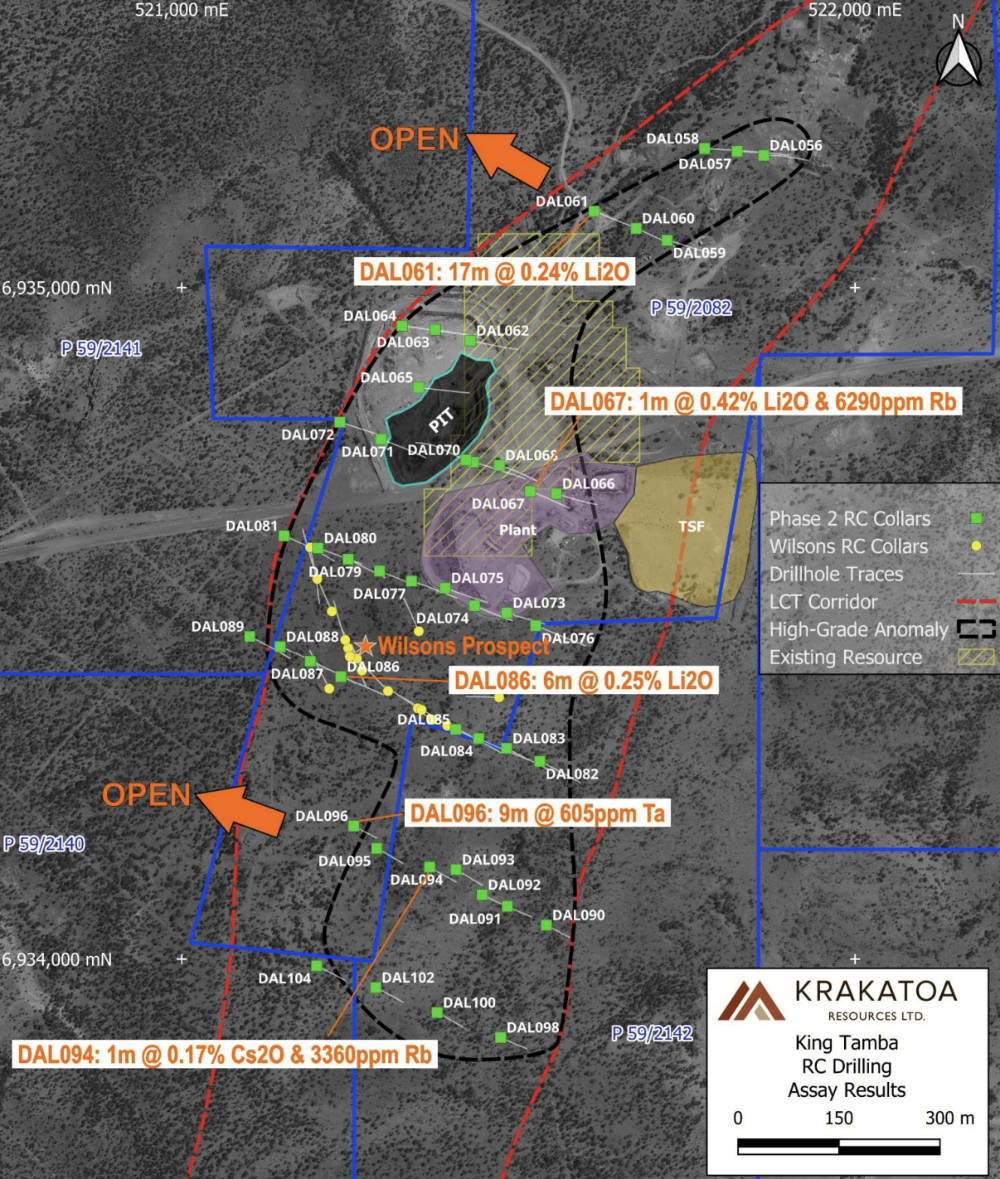Krakatoa’s King Tamba drilling intrigues with multiple zones of LCT mineralisation intersected

Several zones of lithium, caesium and tantalum mineralisation have been intersected at the King Tamba
- Drilling intersects several zones of LCT mineralisation at Krakatoa’s King Tamba project
- One zone of high tantalum, niobium and rubidium remains open to the west
- Results may be used to update and expand the current 5Mt at 0.14% rubidium and 0.05% lithium resource at King Tamba
Special Report: Drilling at Krakatoa Resources’ King Tamba project in WA – a historical tantalum mine – has intersected multiple lithium-caesium-tantalum pegmatites under the target soil anomaly.
The result shouldn’t be all that surprising at this location given tantalum’s well-known association with lithium and King Tamba having historical open pit production of 6,434kg of tantalum between 2001 and 2003.
Adding to its potential for lithium, King Tamba sits within the 50km long by up to 20km wide Dalgaranga greenstone belt that contains gold mineralisation, a zinc deposit and occurrences of tantalum, beryllium, tin, tungsten, lithium and molybdenum related to pegmatites.
To top it off, Krakatoa Resources (ASX:KTA) has been able to define a resource of 5Mt grading 0.14% rubidium and 0.05% Li2O.
Rubidium is used in solar panels, sodium ion batteries, photocells, the removal of gases from vacuum tubes and in glasses, ceramics and fireworks to give them a purple colour.
Its Phase 1 drilling of 27 holes totalling just under 4,000m returned significant pegmatite intersections from multiple drillholes with thick intersections up to 39m in width downhole.
Notably, these pegmatites show variable proportions of quartz, feldspar and mica, along with traces of accessory minerals such as fluorite and tourmaline in places – all the hallmarks of fractionated igneous rocks associated with lithium-caesium-tantalum (LCT) pegmatites.

Multi-element hits
Phase 2 drilling has now confirmed several discrete zones of LCT mineralisation – with minor rubidium mineralisation – are present below the 1.3km by 500m lithium-rich soil anomaly.
Notable intersections include 17m @ 0.24% Li2O from 90m in DAL061 and 9m @ 605ppm tantalum and 5m @ 305ppm niobium from 17m in DAL096, which had intersected a significant zone of high tantalum, niobium and rubidium that remains open to the west.
The Phase 2 drilling was designed to cover the footprint of the lithium soil anomaly using a 200m drill line spacing and 50m hole spacing.
KTA says results from the drilling may be used to update and expand the current resource at King Tamba.
This article was developed in collaboration with Krakatoa Resources, a Stockhead advertiser at the time of publishing.
This article does not constitute financial product advice. You should consider obtaining independent advice before making any financial decisions.
Related Topics

UNLOCK INSIGHTS
Discover the untold stories of emerging ASX stocks.
Daily news and expert analysis, it's free to subscribe.
By proceeding, you confirm you understand that we handle personal information in accordance with our Privacy Policy.








